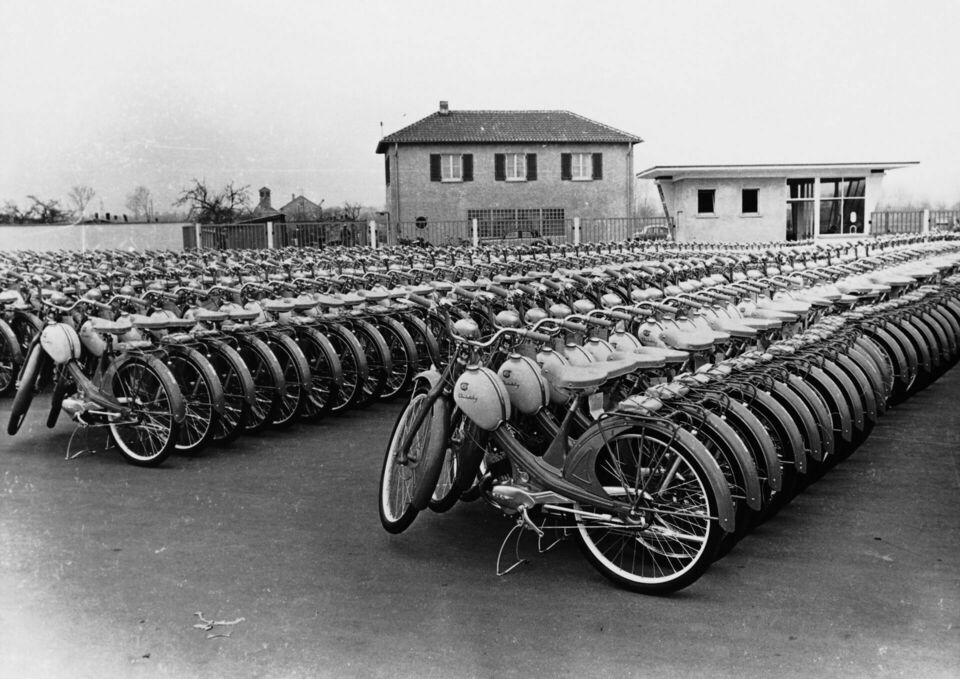Mopeds Unveiled: Navigating Generational Legacies in Post-War Mobility
This article explores the roots of moped culture by focusing on the Silent Generation, individuals born between 1928 and 1945. It highlights how their experiences during the Great Depression and World War II shaped their frugality, resourcefulness, and commitment to hard work, which in turn influenced their contributions to the development of mopeds. The article also discusses how the Silent Generation played a crucial role in the post-war reconstruction by creating the moped as a practical solution for transportation in ravaged cities. It further explores the evolution of mopeds and their lasting impact on modern transportation.
1940'SMOPED CULTURE VINTAGE MOPEDSMOPED PHILOSOPHY
12/22/20232 min read


Mopeds Unveiled: Navigating Generational Legacies in Post-War Mobility
Introduction: Embark on a captivating journey with "Mopeds Unveiled," a series of articles illuminating the diverse stories and contributions of moped enthusiasts across different generations. In this inaugural piece, we delve into the roots of moped culture by spotlighting the Silent Generation—individuals born between 1928 and 1945. Shaped by the seismic events of World War II and the lingering effects of the Great Depression, this generation's resilience, resourcefulness, and collective spirit left an indelible mark on the development of mopeds.
Character and Challenges: The Silent Generation's formative years were deeply influenced by the lingering shadows of the Great Depression. Born into economic hardship and growing up during a period of unprecedented financial strain, they exhibited a frugality and determination forged in the crucible of economic adversity. These early experiences cultivated a sense of duty, discipline, and a commitment to hard work that would later influence their contributions to the world of mopeds.
Childhood, Education, and the Great Depression: Childhood for the Silent Generation unfolded against the backdrop of economic turmoil. The Great Depression cast a long shadow, shaping their early experiences with scarcity and want. Education, even in the face of economic hardship, was seen as a beacon of hope and progress, motivating many from this generation to embrace learning as a means of breaking free from the cycle of poverty.
Standard of Living in the Aftermath: The post-war era witnessed the Silent Generation striving to rebuild in the aftermath of global conflict. Austerity measures persisted, and the specter of wartime rationing influenced their daily lives. The lessons learned during the Great Depression—of making do with less and valuing resourcefulness—remained ingrained, contributing to their approach to frugality and sustainability.
In the wake of World War II: The Silent Generation pioneered the creation of a revolutionary class of vehicles that would redefine post-war transportation – the moped. These individuals ingeniously harnessed the power of a 50cc engine to engineer a practical solution for navigating the ravaged landscapes of bombed-out cities. The moped emerged as a crucial component in the reconstruction of Europe and Asia, where rationed gasoline and a need for efficiency shaped its early development.
The aftermath of war witnessed a remarkable transformation as former weapons manufacturers adapted their factories to produce all manner of mopeds. This adaptive radiation resulted in a diverse array of configurations, each vying for a place in the market. Over a five-year period, this sustained evolution gave rise to what we now recognize as the moped, the scooter, and the motorized bicycle.
As the three contenders – moped, scooter, and motorized bicycle – engaged in an economic "hunger games" for supremacy, the battle wasn't settled until 1980. The introduction of the Continuously Variable Transmission (CVT) marked a turning point, granting 50cc scooters the performance edge needed for acceleration and hill climbing, effectively sealing the fate of the moped.
Yet, the moped endured, solidifying its status as a legal class of vehicle. In the face of the scooter's versatility, from a child's plaything to a mobility aid, the term "moped" became a generic label for any 50cc vehicle. Today, even with the rise of electric bikes, developers marketing products with power between an ebike and a motorcycle find themselves compelled to market them as mopeds—albeit, electric mopeds.
This historical journey reveals not only the technical evolution of mopeds but also their lasting impact on modern transportation. The Silent Generation, through their ingenuity and adaptability, laid the foundation for a class of vehicles that continues to shape the way we move. Subsequent articles in this series will continue to unravel the narratives of later generations and their distinctive roles in the evolution of moped culture.
